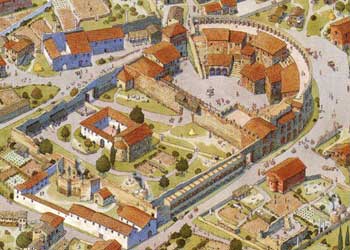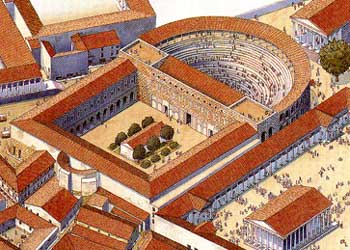The Background
Early Research
The First Season (2002)
The Archaeological Investigations of 2003
Conclusions
By James Packer
The Background
Unfortunately, the Pompey Project’s modern plans, sections, and
elevations of the Theater’s existing remains, and the
“Archaeological Register” produced only uncertain information about
the Theater’s physical fabric. Consequently, in June, 2001,
Architect Silenzi and Professor Packer applied to the
Archaeological Superintendency of Rome for a permit for a new
excavation and asked permission for the excavation from Tata
Giovanni, the ecclesiastical institute that owns Palazzo
Pio.
This excavation would eventually provide a more accurate
ground-floor plan of the Theater under the cavea with respect to
stairways and internal corridors. It would recover important and
securely documented fragments of architecture (and perhaps
sculpture) from the upper levels of the theater. It would produce
post-antique materials that would illuminate the history of the zone
and perhaps demonstrate the slow stages by which the Theater
had disappeared under the predecessors of the modern buildings in
the neighborhood.
These finds would be similar to those recovered by Daniele
Manacorda in the now famous Crypta Balbi, the semicircular room
attached to the peristyle behind the neighboring theater of
Balbus.
 |
|
 |
| Fig. 1. The nearby Theater of Balbus in the
later Middle Ages showing how private houses took over the
ancient structure. |
|
Fig. 2. The Theater of Balbus in
antiquity. The“Crypta Balbi” is the open, semicircular
structure behind the court in back of the
theater. |
